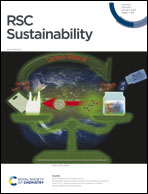Surfactant-free synthesis of metal and metal oxide nanomaterials: a perspective
Abstract
Metal and metal oxide nanomaterials have attracted much interest in medical, pharmaceutical, biological, biomedical, and catalytic applications due to their high surface-to-volume ratio and fascinating physicochemical properties. To date, a wide variety of techniques with different advantages and limitations/challenges have been introduced for the preparation of metal and metal oxide nanomaterials. In this context, the corrosion, purity, and stability of nanomaterials as well as the controllability and repeatability of synthesis techniques are important challenging issues. Metal and metal oxide nanoparticles with different sizes and morphologies are prone to loss of reactivity, since they may precipitate or aggregate as bulk metals; thus different stabilizers such as functionalized polymers, dendrimers, inorganic solids (e.g., carbon, metal oxides, sol–gel clays, and zeolites), ligands (e.g., pincer ligands), or ionic surfactants are typically required in their fabrication. Nowadays, several surfactant-free strategies such as laser synthesis, mono-alcohol fabrication, the Co4Cat process, and microplasma-based techniques have been introduced for synthesizing metal and metal oxide nanoparticles with the benefits of cost-effectiveness, simplicity, and environmentally-benign properties, avoiding the utilization of toxic additives or surfactants. However, the optimization of synthesis/reaction conditions, the controllability of size and morphology, stability, and large-scale/commercial production of nanomaterials ought to be comprehensively explored. Herein, the most recent developments pertaining to the surfactant-free synthesis of metal and metal oxide nanomaterials are deliberated, with a focus on important challenges, opportunities, and future perspectives.



 Please wait while we load your content...
Please wait while we load your content...